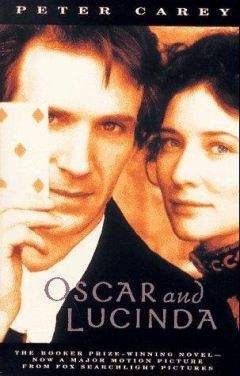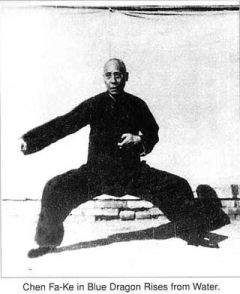Питер Уоттс - Огнепад (Сборник)
172
Reilly J. J. 1995. After Darwin. First Things. June/July; статья доступна в Интернете по адресу: http://pages.prodigy.net/aesir/darwin.htm.
173
Devlin К. 2004. Cracking the da Vinci Code. Discover 25(6): 64–69.
174
Snir Y. and Kamien R. D. 2005. Entropically Driven Helix Formation. Science 307: 1067.
175
Wolfram S. A New Kind of Science. Wolfram Media, 2002. 1192 p.; также книга доступна по адресу: http://www.wolframscience.com/nksonline/toc.html.
176
Albert M. L. 2004. Danger in Wonderland. Science 303: 1141.
177
Muotri A. R. et al. 2005. Somatic mosaicism in neuronal precursor cells mediated by L1 retrotransposition. Nature 435: 903–910.
178
Nelson D. L. and Cox M. M. Lehminger principles of biochemistry. NY: Worth, 2004. (В СССР издавался оригинальный учебник Альберта Ленинджера: Ленинджер А. Основы биохимии. – М.: Мир, 1985.)
179
Prigogine I. and Nicholis G. Exploring Complexity. NY: Freeman, 1989. (Русское издание: Пригожин И., Николис Г. Познание сложного. – М.: ЛКИ, 2008.)
180
Dawkins R. The Blind Watchmaker: Why the Evidence of Evolution Reveals a Universe Without Design. Norton, 1988. (Русское издание: Докинз Р. Слепой часовщик: как эволюция доказывает отсутствие замысла во Вселенной. – М.: АСТ, 2014.)
181
Metzinger T. 2003. Being No One: The Self-Model Theory of Subjectivity. Cambridge (Mass.): MIT Press, 2003. 713 p.
182
Pinker S. How the mind works. NY: WW Norton & Co., 1997. 660 p.
183
Koch C. 2004. The Quest for Consciousness: A Neurobiological Approach. Roberts, Englewood. CO, 2004. 447 p.
184
Wegner D. M. The Illusion of Conscious Will. Cambridge: MIT Press, 2002. 405 p.
185
Saks O. The Man who mistook his wife for a hat and other clinical tales. NY: Simon & Sinister, 1970. (Русское издание: Сакс О. Человек, который принял жену за шляпу, и другие истории из врачебной практики. – М.: АСТ, 2014.)
186
Островок Рейля, или закрытая долька, – часть мозга, находящаяся в глубине сильвиевой щели, между лобной, теменной и височной долями. По некоторым данным, передняя часть коры островка Рейля претерпела существенные изменения в ходе эволюции человека. (Прим. пер. )
187
McFadden J. 2002. Synchronous firing and its influence on the brain’s electromagnetic field: evidence for an electromagnetic field theory of consciousness. J. Consciousness Studies, 9, No. 4, 2002. P. 23–50.
188
Penrose R. The Emperor’s New Mind. Oxford University Press, 1989. (Русское издание: Пенроуз Р. Новый ум короля. О компьютерах, мышлении и законах физики. – М.: ЛКИ, 2008.)
189
Tononi G. and Edelman G. M. 1998. Consciousness and Complexity. Science 282: 1846–1851.
190
Bears B. J. A Cognitive Theory of Consciousness. NY: Cambridge University Press, 1988.
191
Hilgetag C. C. 2004. Learning from switched-off brains. Sci. Amer. 14: 8–9.
192
Roth G. 2004. The quest to find consciousness. Sci. Amer. 14: 32 39.
193
Pauen M. 2004. Does free will arise freely? Sci. Amer. 14: 41–47.
194
Zimmer C. 2003. How the mind reads other minds. Science 300: 1079–1080.
195
Crick F. H. C. and Koch C. The unconscious homunculus. In Neural Correlates of Consciousness-Empirical and Conceptual Questions. Ed. by T. Metzinger. Cambridge: MIT Press, 2000.
196
Churchland P. S. 2002. Self-Representation in Nervous Systems. Science 296: 308–310.
197
Miller G. 2005. What is the biological basis of consciousness? Science 309: 79.
198
Blakeslee S. 2003. The christmas tree in your brain. Toronto Star, 21/12/03.
199
Matsumoto K. and Tanaka K. 2004. Conflict and Cognitive Control. Science 303: 969–970.
200
Kerns J. G. et al. 2004. Anterior Cingulate Conflict Monitoring and Adjustments in Control. Science 303: 1023–1026.
201
Petersen S. E. et al. 1998. The effects of practice on the functional anatomy of task performance. Proceedings of the National Academy of Sciences 95: 853–860.
202
«Дилберт» – серия популярнейших комиксов Скотта Адамса, выходит с 1989 года. Упомянутый персонаж являет собой квинтэссенцию самовлюбленности и некомпетентности. (Прим. пер. )
203
Zimmer C. 2003. How the mind reads other minds. Science 300: 1079–1080.
204
Norretranders T. The User Illusion: Cutting Consciousness Down to Size. Penguin Press Science, 1999. 467 p.
205
Altenmuller E. O. 2004. Music in your head. Scientific American. 14: 24–31.
206
Pinker S. How the mind works. NY: WW Norton & Co., 1997. 660 p.
207
Matsumoto K. and Tanaka K. 2004. Conflict and Cognitive Control. Science 303: 969–970.
208
Helmuth L. 2003. Fear and Trembling in the Amygdala. Science 300: 568–569.
209
Dolan R. J. 2002. Emotion, cognition, and behavior. Science 298: 1191–1194.
210
Treffert D. A. and Wallace G. L. 2004. Islands of genius. Scientific American 14: 14 23.
211
Wegner D. M. 1994. Ironic processes of mental control. Psychol. Rev. 101: 34–52.
212
Proceedings of the Royal Society of London В (DOI 10.1098/ rspb.2003. 2548).
213
Aiello L. and Dean C. An introduction to human evolutionary anatomy. London: Academic Press, 1990.
214
Gallup G. G. (Jr.). 1997. On the rise and fall of self-conception in primates. In The Self: Across Psychology of self-recognition, self-awareness, and the Self Concept. Annals of the NY Acad. Sci. 818: 4–17.
215
Hauser M. D., Chomsky N. and Fitch W. T. 2002. The faculty of language: what is it, who has it and how did it evolve? Science 298: 1569–1579.
216
Carstairs-McCarthy A. 2004. Many perspectives, no cohcensus-a review of Language Evolution, by Christiansen & Kirby (Eds). Science 303: 1299–1300.
217
Dijksterhuis A. et al. 2006. Science 311: 1005–1007.
218
Vince G. 2006. «Sleeping on it’ best for complex decisions». Newscientist.com, http://www.newscientist.com/channel/being-human/dn8732.html.
219
Devlin A.M. et al. 2003. Clinical outcomes of hemi spherectomy for epilepsy in childhood and adolescence Brain 126: 556–566.
220
Pulsifer M. B. et al. 2004. The cognitive outcome of hemispherectomy in 71 children. Epilepsia 45: 243–54.



